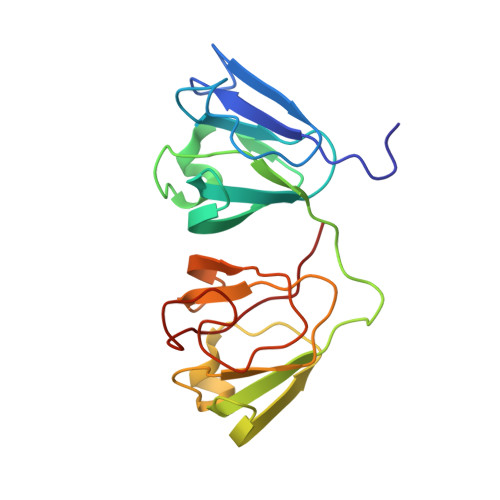Preferential and Specific Binding of Human alpha B-Crystallin to a Cataract-Related Variant of gamma S-Crystallin.
Kingsley, C.N., Brubaker, W.D., Markovic, S., Diehl, A., Brindley, A.J., Oschkinat, H., Martin, R.W.(2013) Structure 21: 2221-2227
- PubMed: 24183572
- DOI: https://doi.org/10.1016/j.str.2013.09.017
- Primary Citation of Related Structures:
2M3T, 2M3U - PubMed Abstract:
Transparency in the eye lens is maintained via specific, functional interactions among the structural βγ- and chaperone α-crystallins. Here, we report the structure and α-crystallin binding interface of the G18V variant of human γS-crystallin (γS-G18V), which is linked to hereditary childhood-onset cortical cataract. Comparison of the solution nuclear magnetic resonance structures of wild-type and G18V γS-crystallin, both presented here, reveal that the increased aggregation propensity of γS-G18V results from neither global misfolding nor the solvent exposure of a hydrophobic residue but instead involves backbone rearrangement within the N-terminal domain. αB-crystallin binds more strongly to the variant, via a well-defined interaction surface observed via chemical shift differences. In the context of the αB-crystallin structure and the finding that it forms heterogeneous multimers, our structural studies suggest a potential mechanism for cataract formation via the depletion of the finite αB-crystallin population of the lens.
Organizational Affiliation:
Department of Chemistry, University of California, Irvine, Irvine, CA 92697-2025, USA.














